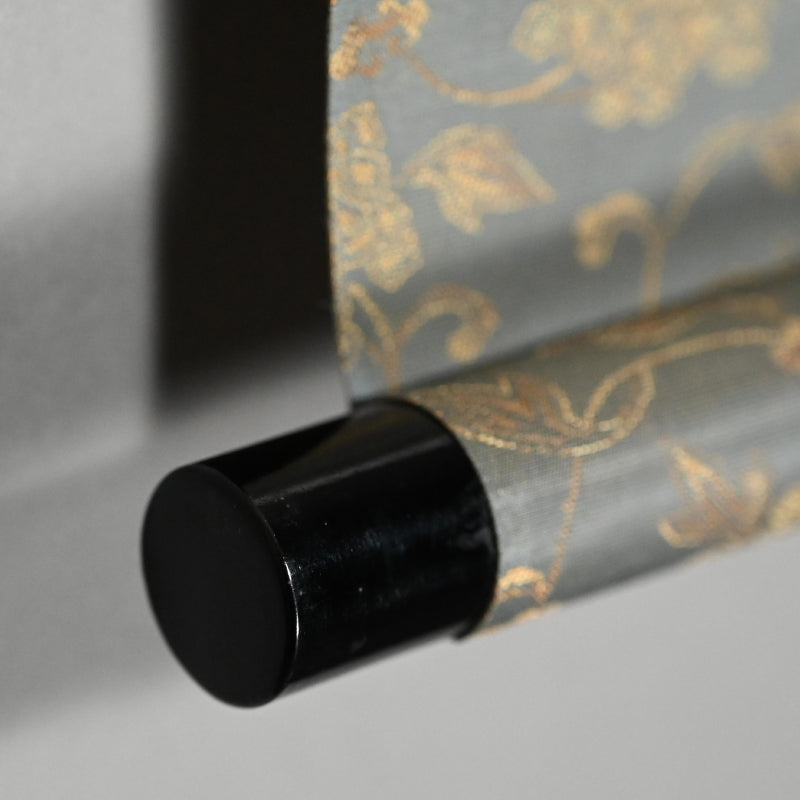Pair of Gassaku Literati Scrolls, Kodojin, Eiran, Seito ー福田 古道人, 三浦 英蘭, 国府 犀東
Pair of Gassaku Literati Scrolls, Kodojin, Eiran, Seito ー福田 古道人, 三浦 英蘭, 国府 犀東
Item Code: 古28
Couldn't load pickup availability
Mount Fuji rises majestically beyond a blossoming plum, and a scholars studio displays a fine assortment of natural objects in this complimentary pair of paintings by Fukuda Kodojin and female artist/Poet Miura Eiran with calligraphy by Kokufu Seito. The poems read:
1: The mountains connect, draped in eternal snow; From the land of the sages, one branch brings forth spring.
2: From whence comes the crane, seeking rest? Moss spreads thick upon the earth, ever deepening.
The ink and light color on paper works are 46 x 178 and 46 x 183 cm (18 x 70 and 18 x 73 inches) respectively, mounted in silk with wooden rollers.
Kokufu Seito (1873-1950) was a scholar and poet born in Kanazawa prefecture. Adopted into the Kokufu family, he began learning calligraphy and poetry at the age of 11 in a Zen temple. He graduated the prestigious law department of Nippon Daigaku before working as a newspaper reporter and writer, his poetry was very influential, and he later served at both Waseda University and the Kyusei Tokyo Koto Gakko as well as serving the government in a host of official positions. Much published, his books and poetry are still important reading today.
Miura Eiran (1880-1957) was a poet and artist born in the family of Miura Kubo in Tsugaru. She was adept at Waka Japanese poetry, calligraphy, Chinese poetry, Flower arrangement, Tea ceremony, and playing the Koto (harp). She studied Nihonga painting under Satake Eiko, and Nanga under Kodama Katei. She was awarded at the Nihon Bijutsu Kyokai Exhibition and Nihon Gakai Exhibition among others, a rarity for a woman in her day. Her poems were collected and published in five volumes after her death.
Fukuda Kodojin (1865-1944) was an eccentric self taught artist, his status as a poet, calligrapher and literati artist has reached legendary status. Born at a time of great change (4 years before the final fall of the Edo Government), he lived through the westernization of Meiji, Taisho Democracy, the rise of Imperialism and final defeat of the Showa eras. He was self taught, part of a small group of artists existing outside conventional circles in pre-war Japan. He moved to a village outside of Kyoto in 1901, where he supported himself and his family by privately tutoring those who wished to learn Chinese-style poetry. Kodojin was simply a scholar. His poetry, painting, and calligraphy all stem from a life-long cultivation of the mind. He was known to have taken the time just before his death to destroy the large portion of his own remaining work, leaving only that which must have met some personal criteria. For more on his life see the book Old Taoist, or Unexplored Avenues of Japanese Painting. Twenty five paintings by the artist formed a private exhibition (from Gitter-Yelen) at the New Orleans Museum of Art in 2000, and he is part of the Hakutakuan collection, Clark Collection, and Minneapolis Museum among many others.
Share
















































